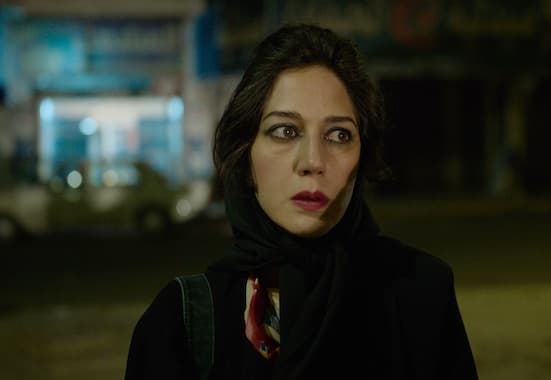
* * *
“Holy Spider,” the new film by director Ali Abbasi, has been subject to a level of critical commentary that can’t help but give pause to both the seasoned cinephile and the news junkie.
Iran’s Ministry of Culture and Islamic Guidance in May released a statement describing Mr. Abbasi — an Iranian-born filmmaker now living in Denmark — as having “a confused mind.” The officials declared that his “Holy Spider” was an insult to “the beliefs of millions of Muslims and the huge Shiite population of the world.”
Underlining its displeasure, the governmental body went on to liken Mr. Abbasi’s picture to “The Satanic Verses.” Given current events in Iran and the recent attack on that book’s author, Salman Rushdie, “Holy Spider” arrives in theaters with a level of disapprobation and pertinence few filmmakers could imagine.
Mr. Abbasi likely considers all of the above a badge of honor. Just this month, he appeared on the red carpet at the London Film Festival wearing a cleric’s robe and with a faux bloodied mouth. He was holding a sign reading “#MahsaAmini” — the name of the young woman whose death at the hands of Iran’s morality police has prompted a spate of nationwide demonstrations in that country. Mr. Abbasi is not above courting controversy or, for that matter, engaging in a bit of theater.
Anyone who sits down to watch “Holy Spider” has to wonder how the film was made. The picture it paints of life in Iran isn’t happy. (For the record: filming took place in Jordan.) Admittedly, any story predicated on a serial killer who operates under a skewed notion of spiritual rectitude will, in large part, waylay the picturesque. Yet the societal shortcomings highlighted by Mr. Abbasi, who co-wrote the film with Zar Amir Ebrahimi, should prompt dismay in those of us comfortably ensconced in the West; outrage, too.
Along with her duties as screenwriter, Ms. Ebrahimi stars as Rahimi, a reporter from Tehran who has traveled to Mashhad, the country’s second-largest city and home to the Imam Reza Shrine, a site at which millions of pilgrims congregate annually. A serial killer has been murdering prostitutes in the area, and the police have been stymied in locating the perpetrator. Rahimi joins forces with Sharifi (Arash Ashtiani), a local newspaperman who has, on several occasions, been in telephone contact with the murderer.
“Holy Spider” begins as a whodunnit but shifts gears when Mr. Abbasi tips his hand and lets us know the identity of the killer: Saaed Hanaei (Mehdi Bajistani), a 50-ish construction worker and family man who served in the Iran-Iraq war. Whenever the wife and kids are visiting the in-laws, Hanaei rides his motorcycle to the sketchier precincts of Mashhad, picks up a prostitute, and brings her home. Strangulation, often using the victim’s own chador, is the preferred method of execution.
Mr. Abbasi and Ms. Ebrahimi tread an uneasy line between established fact and cinematic fiction. Ms. Ebrahimi’s character is invented; Mr. Bajistani’s is not. Saaed Hanaei killed 16 women between the years 2000 and 2001 while on a self-styled divine mission to rid Masham of its “cockroaches.” The city was riven by fear. Just before Hanaei’s arrest, the police rounded up hundreds of prostitutes — not for prosecution, but for their own protection.
As the film progresses, “Holy Spider” morphs into a character study and then a police procedural, becoming, in its last minutes, an excoriation of cultural mores. When Hanaei becomes a folk hero after his arrest — he is cleaning up the streets, right? — Rahimi is aghast and Sharifi nonplussed. It’s business as usual, it seems, in the oppressed and patriarchal Iranian culture. Whereupon Mr. Abbisi ends the film with a scene that would be melodramatic in its contrivance if historical circumstance hasn’t proved it altogether accurate.
“Holy Spider” is grisly, graphic, and often difficult to watch, but it is a compelling, impeccably crafted, and recommended movie. Just be warned: You’ll almost surely leave the theater in an unsettled frame of mind. This, of course, is the point.
(c) 2022 Mario Naves
This article was originally published in the October 24, 2022 edition of The New York Sun.